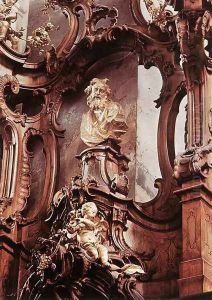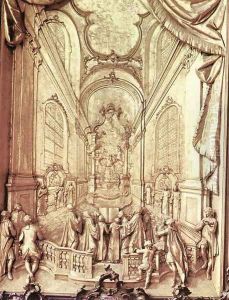Johann Josef Christian Paintings
Johann Josef Christian was a German sculptor and woodcarver born in 1706, in Riedlingen, a small town in the present-day state of Baden-Württemberg, Germany. His early life and training are not extensively documented, but it is known that he emerged as a significant figure in the Rococo style of art, which was prevalent in Europe during the 18th century. The Rococo style, characterized by its ornate and highly decorative elements, found a compelling advocate in Christian's work, particularly in his religious sculptures and altarpieces.
Christian's career was largely centered around Southern Germany, where he contributed significantly to the decoration of churches and other ecclesiastical buildings. His works are noted for their dynamic forms, intricate details, and the emotional depth of the figures he sculpted. One of his major contributions is the decoration of the church in Zwiefalten Abbey, where his work exemplifies the transition from the late Baroque to the Rococo style. His ability to infuse his sculptures with a sense of movement and his delicate treatment of surfaces are particularly noteworthy.
Throughout his career, Johann Josef Christian maintained a focus on religious themes, reflecting the demands of his time and region. He was adept at woodcarving as well as stucco work, which allowed him to create a diverse range of artworks. Despite his contributions to the Rococo movement and the high quality of his work, Christian did not gain widespread recognition outside of his immediate region during his lifetime.
He passed away in 1777, in Riedlingen, leaving behind a body of work that would later be appreciated for its artistic merit and contribution to the development of Rococo art in Germany. Today, Johann Josef Christian is recognized as an important figure in the history of German sculpture, particularly in the context of the Rococo period. His works continue to be studied for their technical skill and artistic beauty, offering insights into the religious and cultural contexts of 18th-century Germany.




